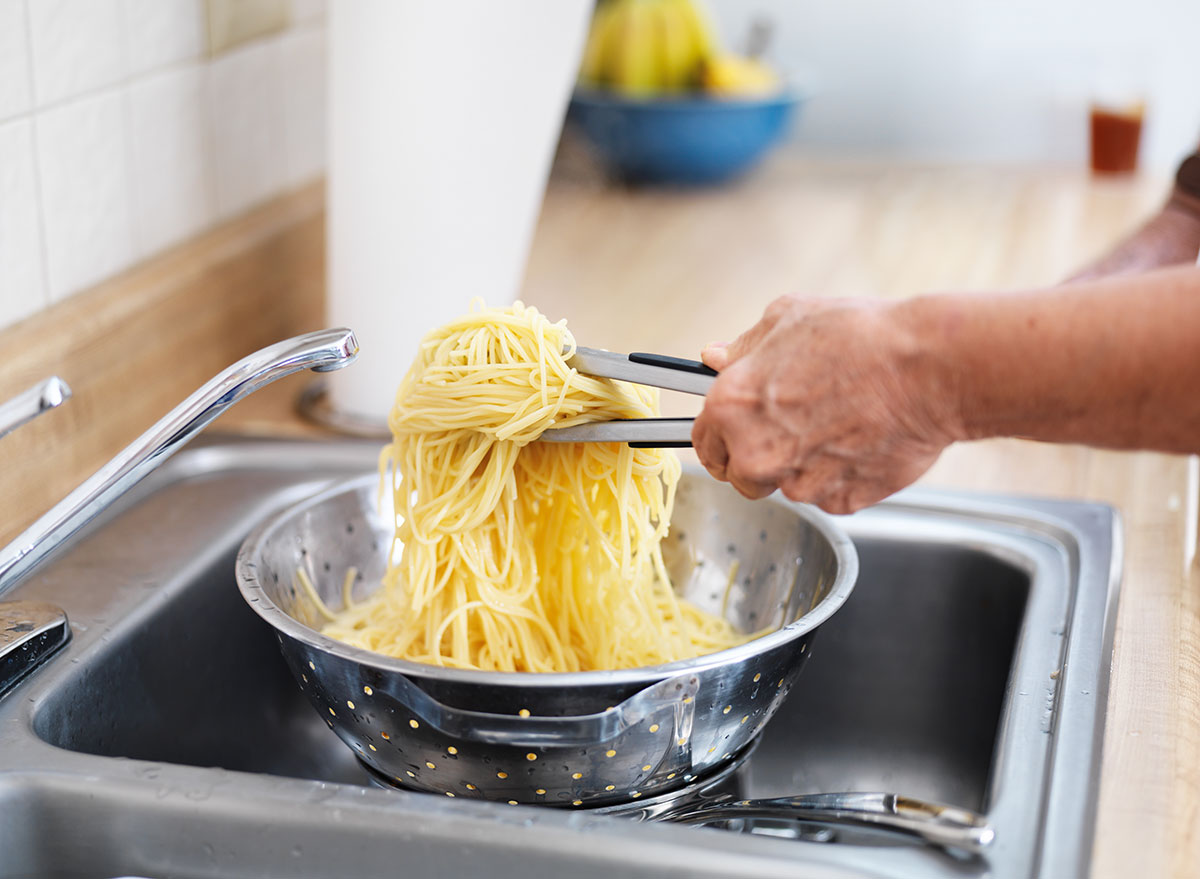

As for water after cooking, WiseFins can give you some tips on how to reuse your water wisely: water your plants, make a soup, and make a hair care product for damaged hair or even to remove grease. RESULT: pasta wins this round! Easy, growing rice consumes more water than any other crop. Pasta is high in carbohydrates and white rice has 62 less carbohydrates than pasta - white rice has 28.6g of total carbs per 100 grams and pasta has 74.7g of. For cooking, 1 litre of water is required for 100 grams of pasta and two volumes of water are needed for one volume of rice. However, these figures take into account water needs during production and not during consumption.

Indeed, the production of one kilo of pasta would require 720 litres of water, almost 20 times less than rice. Chickpea pasta goes well with peas, olive oil, and Parmesan. This is an astonishing figure, as it would be equivalent to running a dishwasher more than 300 times! His opponent seems to be less greedy in his water consumption. Black bean pasta’s heartier taste works better with strong, spicy flavors. The use of water is so important that it is estimated that the production of one kilo of rice requires 13,850 litres of water. Rice flourishes in rice fields where water plays a predominant role in the different production cycles: evapotranspiration, infiltration and evaporation. Having said that many noodles are lower in. Let us start this second round with our cereal, rice. There are minor difference and in some noodles you will find higher amounts of protein and essential amino acids. pasta: which has the lowest impact on water resources? “Customizing it is always a smart move.Round 2: rice vs. “Ask for the sauce on the side so you control the amount you put on,” advises Agustines, who also suggests getting a version laced with a protein like shrimp or chicken and asking for extra veggies thrown in. Its downside is the sky-high sodium from the soy sauce that the noodles are swimming in, but that’s an easy problem to solve.

On its own, konjac is a healthy alternative to wheat pasta and rice noodles. Lo mein, meanwhile, is typically made with egg noodles, which are a better option than traditional white pasta thanks to an extra protein boost from the yolk. Konjac Range: Noodles, Pasta and Rice are Vegan, Keto Friendly, Low Carb. “If you want rice at a restaurant, your best bet is to get an entrée like chicken and broccoli and steamed rice on the side.” Even though whole grain pasta and noodles tend to be healthier for you than the kind made with processed flour, both options provide a decent amount of. “You can’t make fried rice better unless you make it on your own,” says Jennifer Agustines, a Tampa-based registered dietitian. Yes, both dishes usually come slathered in sauce, but the rice offers the unfortunate double-whammy of being fried in oil first. Nutritionally, the good news is that rice and pasta have the same number of calories, about. Comparatively, rice contains less carbs than pasta. Pasta is made of wheat flour, water and eggs while rice is a cereal.

To begin with, pasta and rice are high in carbs, and are not ideal for a low-carb diet. So what’s the healthier order, fried rice or lo mein? Short answer: lo mein. In the battle of pasta vs rice, pasta wins the race by a small margin in terms of the amount of nutrients per serving. (We said occasionally.) But you don’t want to abandon all discipline and end up feeling like the love child of Jabba the Hutt and Fat Bastard. You train hard, and occasionally you like to reward yourself with Chinese takeout.


 0 kommentar(er)
0 kommentar(er)
